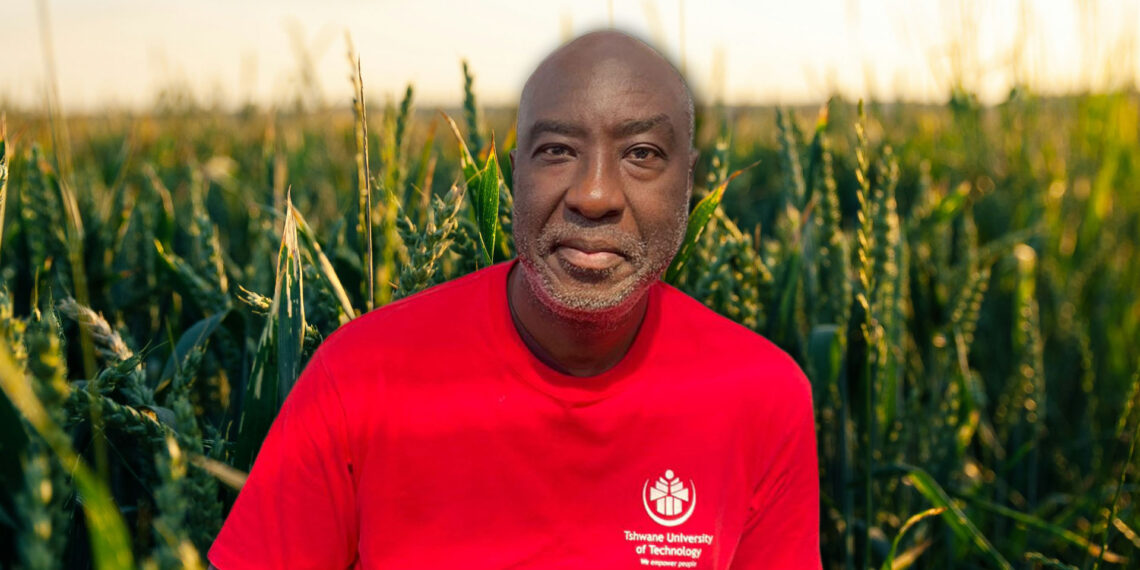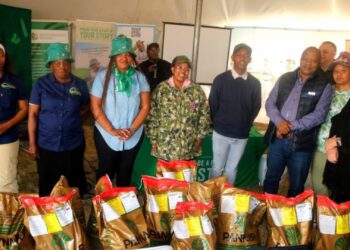Farmers are on the frontline of climate change. Scorching heat is burning fields, floods are washing away harvests and livestock, and trees are struggling to survive. Climate-smart action is no longer optional; it is urgent. According to Professor David Katerere, research chair in pharmaceutical and biotech advancement at Tshwane University of Technology, we do not have to look further than indigenous climate-smart crops.
Food For Mzansi caught up with Katerere on the sidelines of the 9th International Conference of the Society for Medicinal Plants and Economic Development (SOMPED), in Benoni, Johannesburg. He shares his insights on the importance of indigenous grains and their role in climate-smart agriculture.
From protecting soil and saving water to cutting emissions and securing food, the solutions must match the scale of the crisis.
Vateka Halile: Which African plants show the greatest potential for supporting climate-smart agriculture in South Africa?
Professor David Katerere: Sorghum and millet are very important for good soil health. They also tend to absorb a lot of carbon into the soil. And in South Africa, we’re not really farming enough of these indigenous grains.
By the way, these are the indigenous grains of Africa and Asia, so we probably need to be farming them. The reason why people are not farming them anymore is simply because they’re very difficult to farm. And then you get a bird problem, right? Because they are open-pollinated varieties, the seeds are out there.
So what happens is birds can come through and eat them, and that’s why maize has kind of taken over. Maize is also very dense in carbohydrates. When you consider the history of South Africa, with wanting men to have a lot of energy for the mining industry, maize just became the universal staple, if you like. There’s room for these grains to come back.
The other thing, though, not quite South African or African as many people might want to think, would be hemp and cannabis. Hemp, in particular, is very good for the soil. It actually takes in a lot of carbon, and it should really be promoted in communities.
Related stories
- Medicinal plants conference highlights healing & profit potential
- Agroecology: Make farmers profitable, not poor
- Solar success: Poultry farmer turns setback into comeback
- Nampo Cape: Sign up for sustainable veggie farming event
How can traditional knowledge of these plants be integrated with modern climate-smart farming practices?
In terms of traditional knowledge, I’m not really into farming as such, but I can tell you that there were traditional ways of doing things. So, millet and sorghum do not really require a lot of water, which makes them really climate-smart in that sense. And you can pretty much use everything from the plant, the grain, and then the other biomass can go into biofuels and those kinds of things.
I think the main challenges are just that, technologically, sorghum and millet have lagged behind from an agro-processing perspective, particularly in Southern Africa, because Southern Africa just became a maize belt.
And then, of course, in terms of sorghum, it was really looked down upon as animal feed, although it is a very good animal feed. It is fermented, as you know, into alcoholic and non-alcoholic beverages, like mahewu. So it has a lot of potential, at least on the agro-processing side.
How can farmers, communities, and policymakers collaborate to make the use of these plants more widespread and effective?
We need to promote the fact that they are healthy alternatives to what we currently have. We also need to create market demand.
One of the most important things that policymakers should be doing is removing VAT from sorghum-based products, because at the moment, if you’re going to buy sorghum flour, it’s at least double the price of maize flour or mealie meal.
That disincentivises people to switch, whereas it should be on par or even cheaper, because it’s a healthier alternative, a so-called superfood.
The other thing that one should also be looking at is plants like amaranthus. These [are] so-called leafy vegetables. Amaranthus is also considered a superfood, a very important climate-smart edible weed, but very healthy.
I don’t think we’re doing enough with amaranthus in a formal value chain. Its consumption is quite patchy, and people normally eat it as a leafy vegetable, but the grain of amaranthus is quite valuable. Pigweed; that’s what amaranthus is called. It holds the soil well.
Then there are also plants like blackjack, which are very important, both for food and for medicine, including herbal teas and that kind of thing.
READ NEXT: Minister vows to fast-track land reform, axe bad CPAs


















